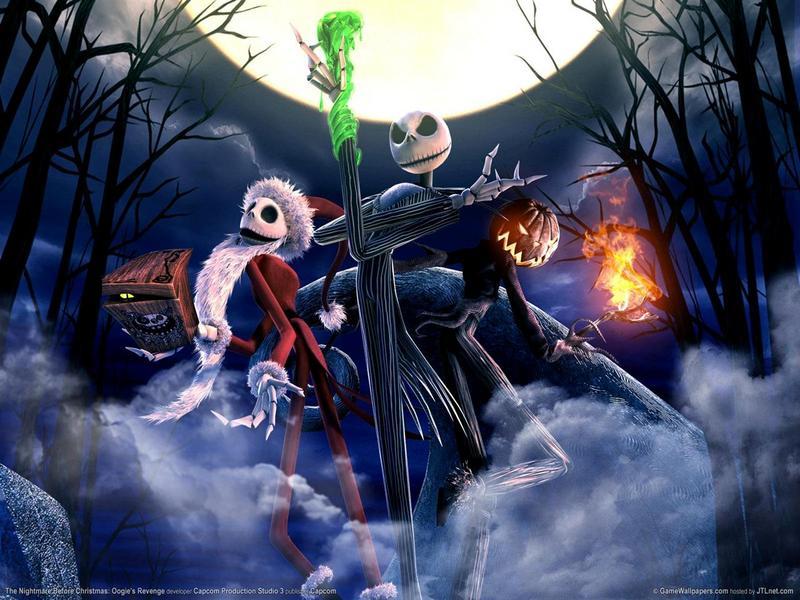
Pictures chosen by BBN-ANG 102/n, Autumn 2011
 |
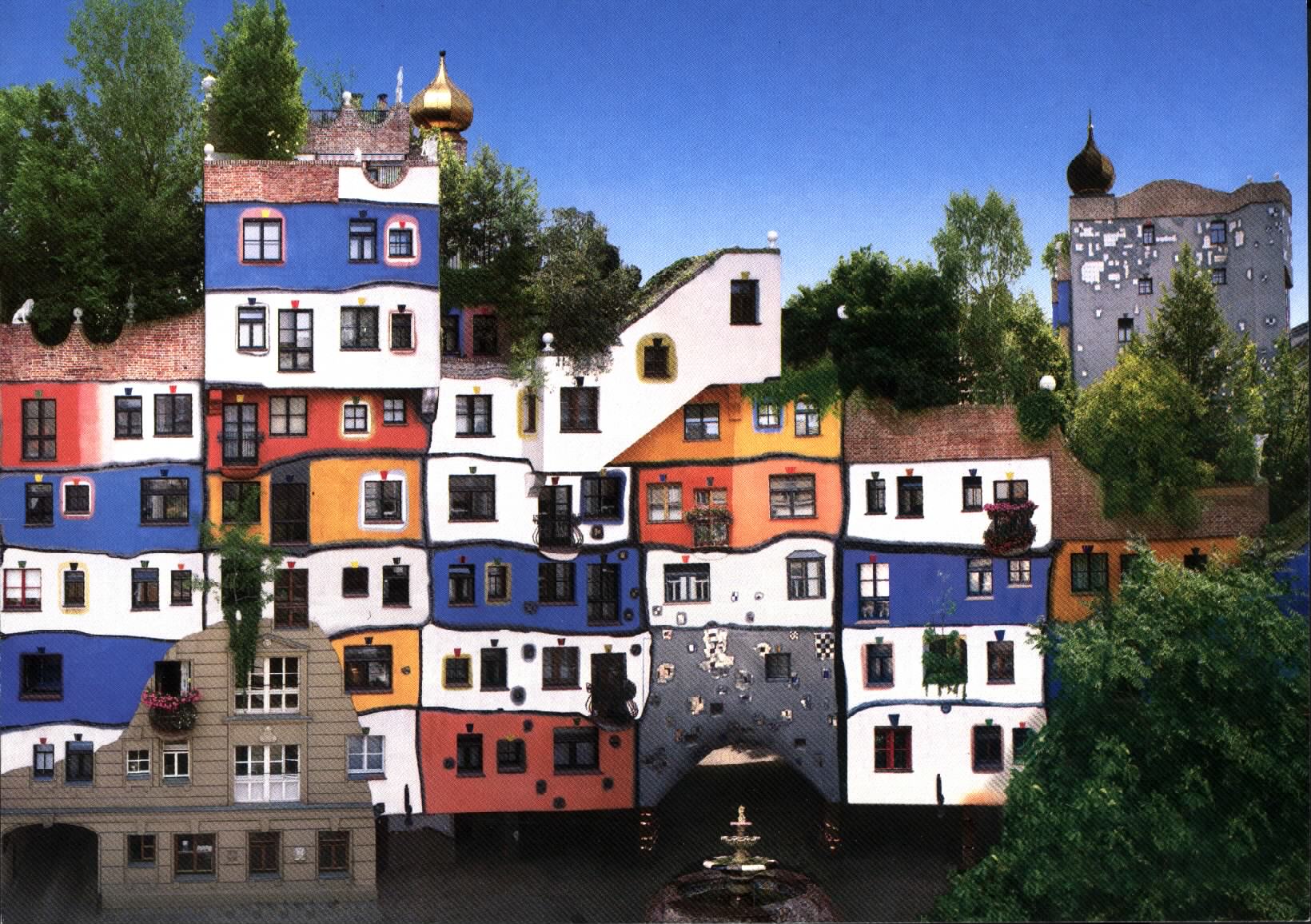 |
The Hundertwasser House stands in Vienna and was built in the middle of the 20th century by the artist whose name was Friedensreich Hundertwasser. He was not only an architect but a painter, too. His aim with this house was to symbolise the connection between humanity and nature. It can be seen on the photo that there are trees planted in the middle of the building and on its roof - so Hundertwasser tried to bring pure nature closer to the people living in this building. The most exciting thing about the house is that there is no single straight line on it, because every square meter is handmade. In addition, the painter thought that all people have the right to form not only the inner wall of their home, but the space around the window, too, which can be seen from the street. This is the reason, why every piece of the wall looks different. The inside of the building is similar: the stairways and even the toilets aren’t usual; everything looks crazy and colourful. I chose this piece of art, because I saw it some years ago, and it fascinated me with this spectacular variety of stimulating shapes. |
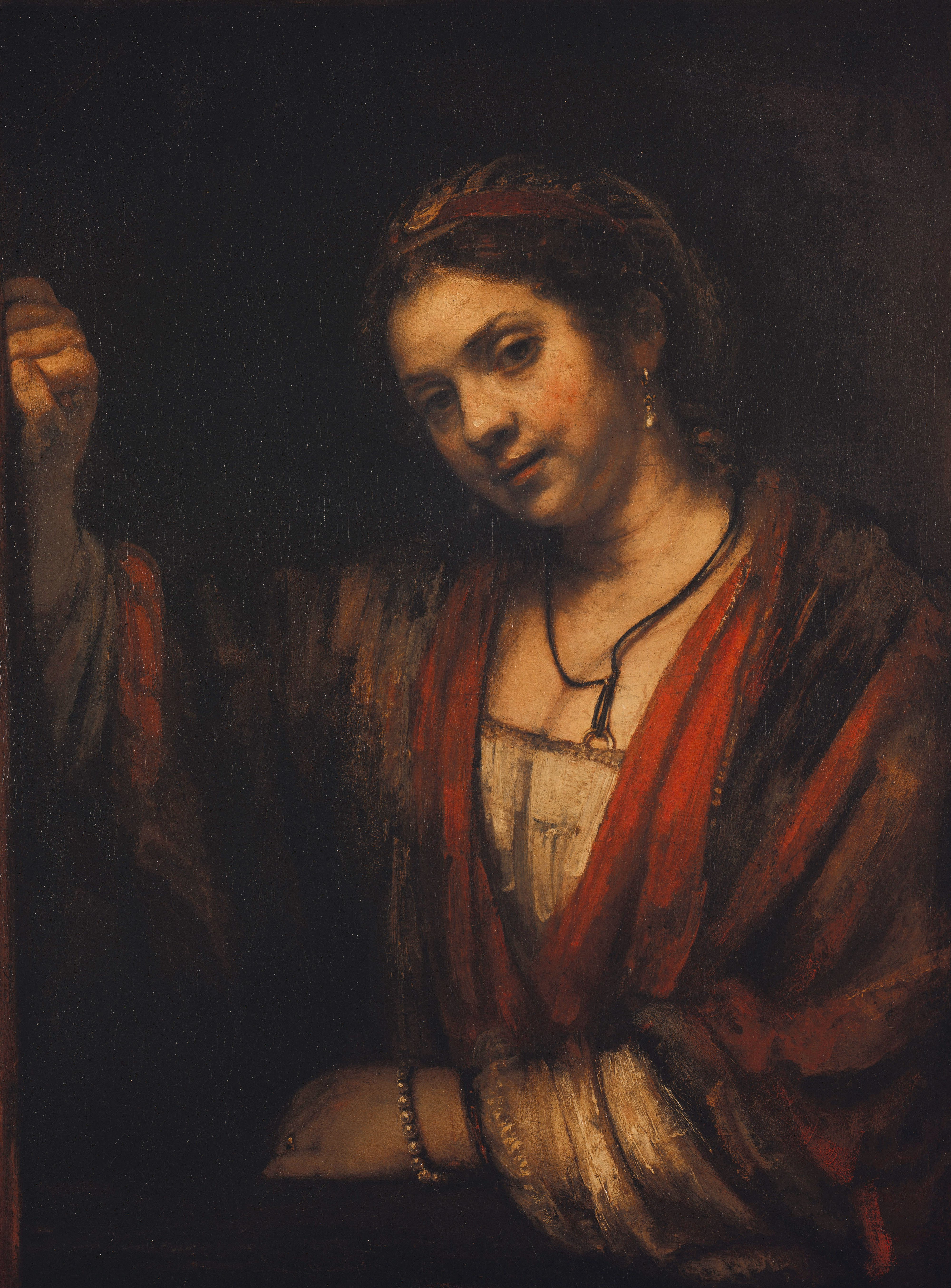 |
The picture I chose for class is the Portrait of Hendrickje Stoffels by Rembrandt. I was in my early teens when I first saw it in an Art History coursebook, and it's been one of my favourites ever since. The first thing to catch my eye was her big brown eyes (I have a thing for people with brown eyes and a nice set of eyelashes). After looking at the painting thoroughly, I read the caption under it, and learned that Hendrickje Stoffels was the life partner of the artist and a model for his paintings (mainly as biblical female figures like Sarah or Bathsheba), which gives explanation for the thing I like the most about this picture: the glowing intimacy of it. This is something I'm not sure I can put into words properly, but you can just see it: the way she looks at the man behind the canvas; her position (which I think is very commonly used when modeling for portraits, but it can be comfortable for a short while, and which people often take up when they muse about something); the fact that she didn't even adjust the string holding the ring round her neck before they started the work. (Several other paintings of Rembrandt featuring Hendrickje share the same feeling of intimacy). The other thing is related more to the picture itself and the techniques used rather than feelings and speculations outside of it: the lights and shades. Most of the painting shades into darkness which is contrasted to a few light spots like her skin and the gleam of her jewelery, especially of the pearls on her bracelet (which I find an upliftingly brilliant detail of the picture). I also like the grades of shade on her skin, how even the smallest wrinkle casts a shadow over it, not to mention the dimples on her face. I could go on about this painting for pages, so I'll just stop here; I hope I managed to cover satisfactorily why I like it. |
|
Akseli Gallen-Kallela: View Over Lake Ruovesi Akseli Gallen-Kallela, who lived between 1865 and 1931, may have been the most famous Finnish painter. He had been born to a Swedish family, but he felt that Finland was his home, so he decided to live in Finland for most of his life. He became famous for his illustrations of the Kalevala, the Finnish epic. However, the painting I have chosen was not painted for the Kalevala: it is the scenery he saw from his summerhouse in Ruovesi, which is a town not too far from the place where I was born. The atmosphere of the painting is calm and peaceful, and what I like most about it is how he shows the sunshine on the trees: it looks as if the trees were painted with gold. Every time I look at this picture, I remember the lakes, the trees and the clouds of Finland - this is why I love it so much. |
|
 |
I have given you a painting by the Hungarian artist Mihály Munkácsy (1844-1900). I had the fortune of visiting this summer an exhibition with his paintings. This one is not the most famous of his works, but it is one of my favorites; you see he has a series of pictures that show the every day of the women who just try to raise their children. These especially show a given scene from the living room of each of these women. His perfection in detail is something I find extraordinary and if you look at it from a given point of view, it is almost as perfect as a photograph. |
|
Claude Monet: Venice, the Doge's Palace |
|
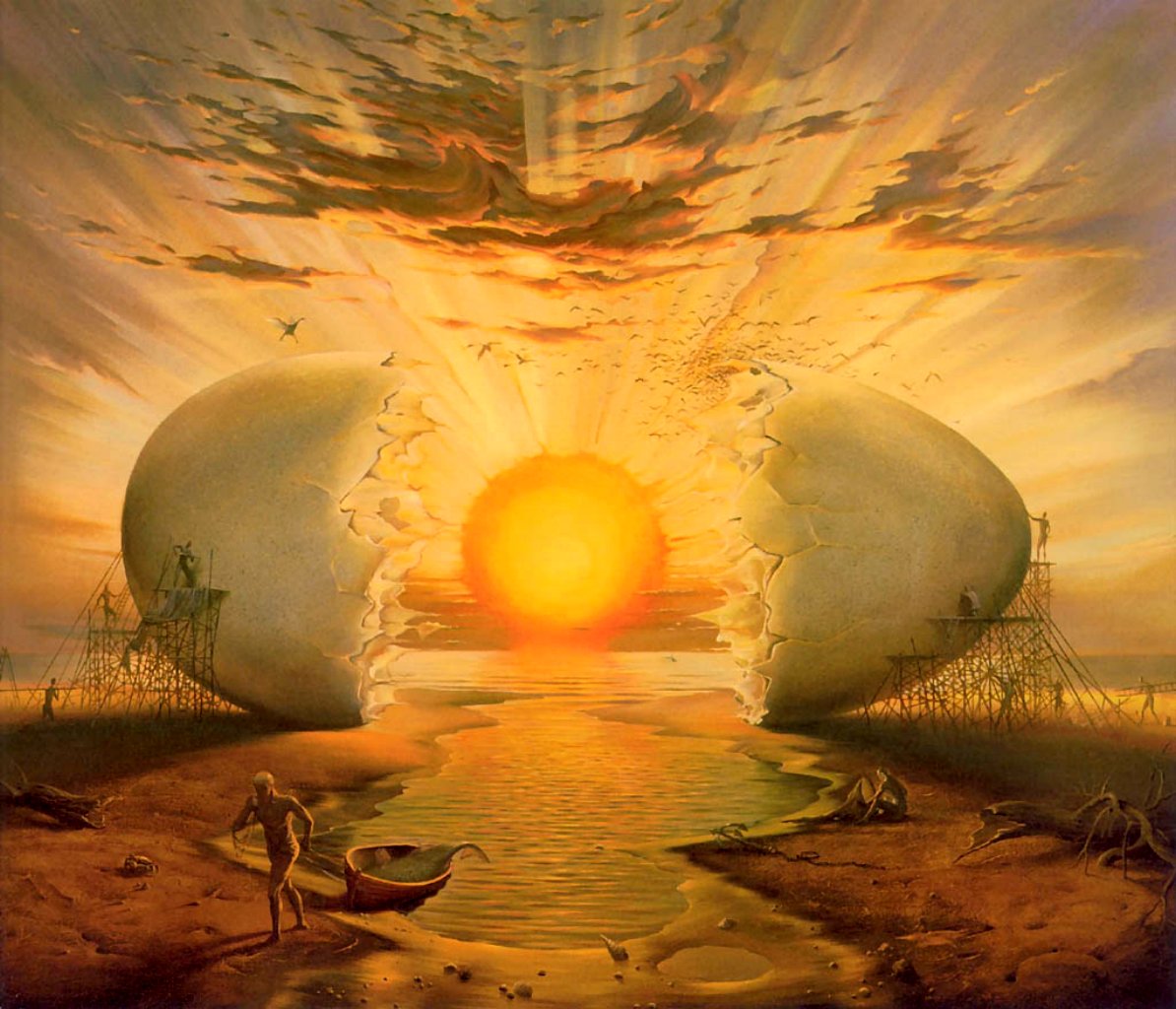 |
The picture I talked about in class, Sunrise by the Ocean, was painted by Vladimir Kush, a Russian painter and sculptor. He was born in 1965 and started drawing at the age of 4. He attended several art schools and now works as a professional artist. His style is mostly described as surrealistic, though he himself prefers the term 'metaphoric realism'. Aside from paintings, sculptures and jewels, there is also an animation available which has been made using his paintings and ideas. http://www.youtube.com/watch?v=WgLiwWebz8M |
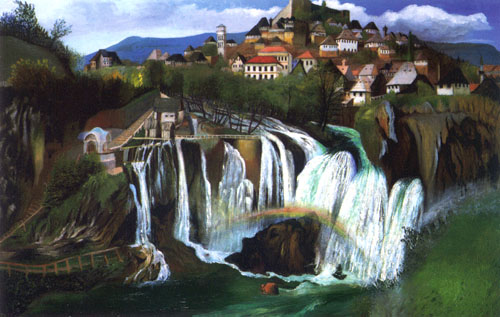 |
I chose the painting Waterfall at Jajce by Tivadar Kosztka Csontváry. This picture shows a wonderful landscape that can be found in Bosnia. What I especially like about this depiction is that the painter didn't put it on canvas in an ordinary style, but we can see it from his perspective, through his eyes. I think he invites us into another world, where his visions dominate. I also admire the colours he used and the way he painted the impressive waterfall, and whenever I look at this picture, it helps me to unwind. |
 |
This is a Chinese character which means “good luck”, “happiness”, “blessing” or something like that. Its pronunciation is "fú". The character itself is written in yellow, and its background is red. In China yellow and red, alone or combined, also symbolise good luck. We put this character on walls or doors on special days, such as Chinese Spring Festival, wedding days and so on, but we don't put it this way up, actually: we put it upside down. We do this because in Chinese, the word for “upside down” is pronounced "dŕo", which has the same pronunciation as another word for "arrive". So, we put this character upside down, which means "Good luck arrives". Good luck! |
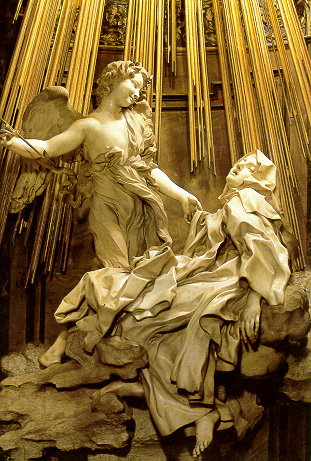 |
|
 |
This picture is the album cover of famous British heavy metal band Iron Maiden's 12th studio album. It's entitled "Brave New World" after Aldous Huxley's famous novel. The cover was made by Derek Riggs, who had made all the previous album covers too. In the picture you can see a futuristic depiction of London, and in the clouds the band's mascot - Eddie, the head's face. He has appeared on every Iron Maiden album cover so far. The reason I chose this picture is because this was the first heavy metal album I listened to and it made me like the heavy metal genre. It is still one of my favorite albums. |
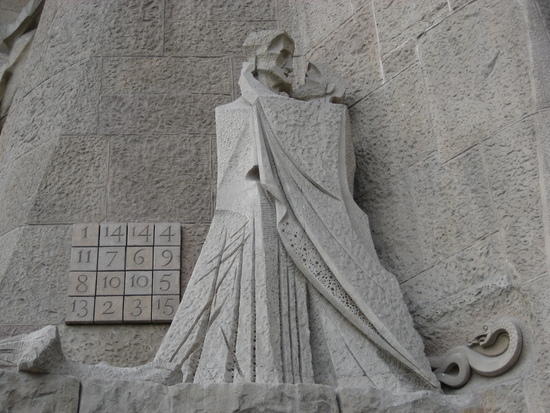 |
Kiss of Judas (Betrayal of Christ) This
statue is a tiny little part of the well-known, huge Sagrada Familia (The
Holy Family) church in Barcelona, Spain. Antonio Gaudí, who began work on
this project in 1883, designed the Church. However, the construction is a
slow procedure relying on private donations; the Spanish want to finish it
by Gaudí's centennial in 2026. Gothic style and art nouveau (new art) play
the main role in the style of this building. My chosen part is of course
from the modern/contemporary time. The reason for it was that, when I got
this task, the first image that came to my mind was this one. I visited the
half-ready church a few years ago when I travelled to my favourite town,
Barcelona. |
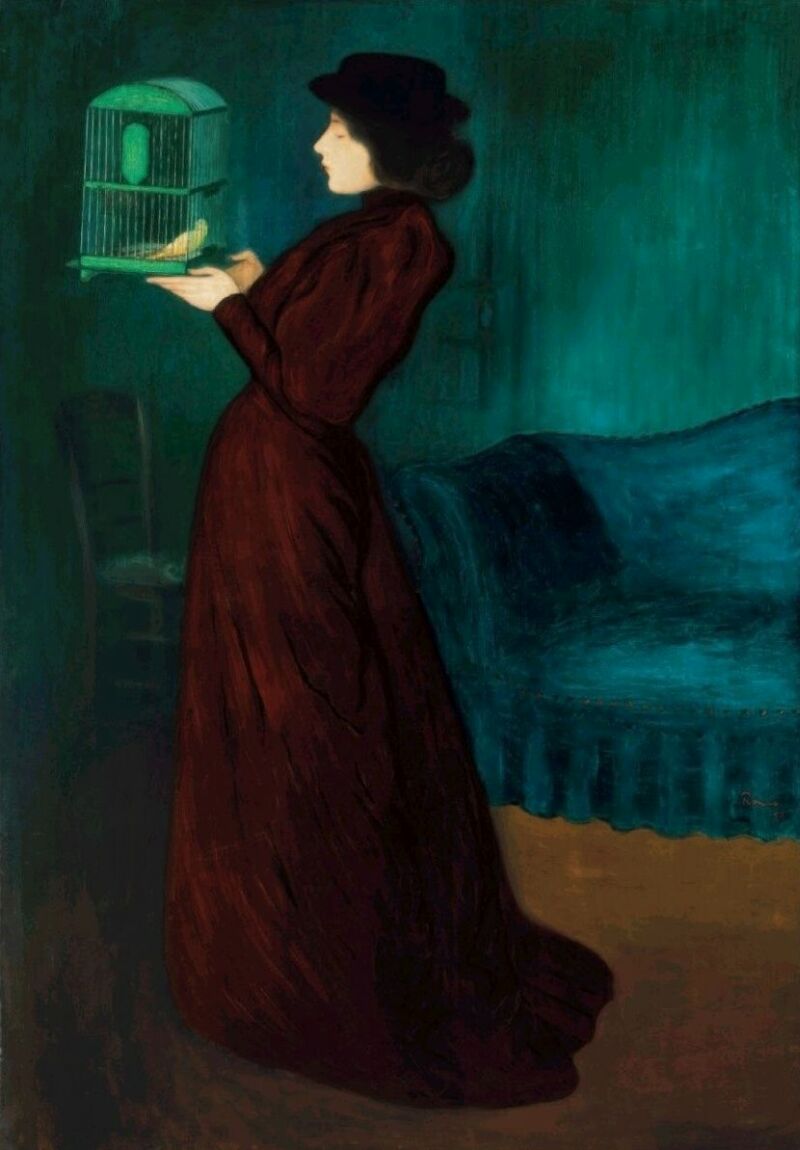 |
The picture I chose is Woman with Cage, which was painted by Rippl-Rónai József in 1892. Its style is Art Nouveau, which is my favourite one during the winter (when it is spring or summer I prefer Impressionism). The reason I have chosen this painting is that when I saw it for the first time this summer in the National Museum, I just couldn't help staring at it. I love the contrast that everything is so dark in it except for the bird in the cage and the skin of the lady, which somehow shines on it, and the symbolism that the lady seems to be as locked in as the bird. We can say that the picture has something to do with the suffragette movement and emancipation, but for me it is more important that it has awoken emotions in me. I think that everybody feels a little bit locked in or limited sometimes. And the lines are very fine on it, so it is good to look at the picture :-). |
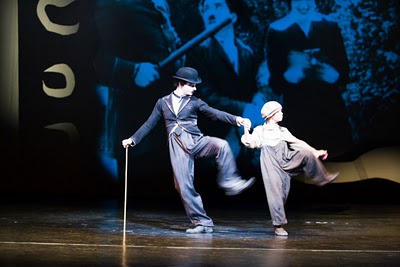 |
Keep Smiling - homage for Chaplin in ballet The Ballet Company of Györ put a great piece of work on
stage in 2009: Keep smiling- homage for Chaplin on ballet choreographed by
Ben Von Cauwenbergh and Dimitrij Simkin. |
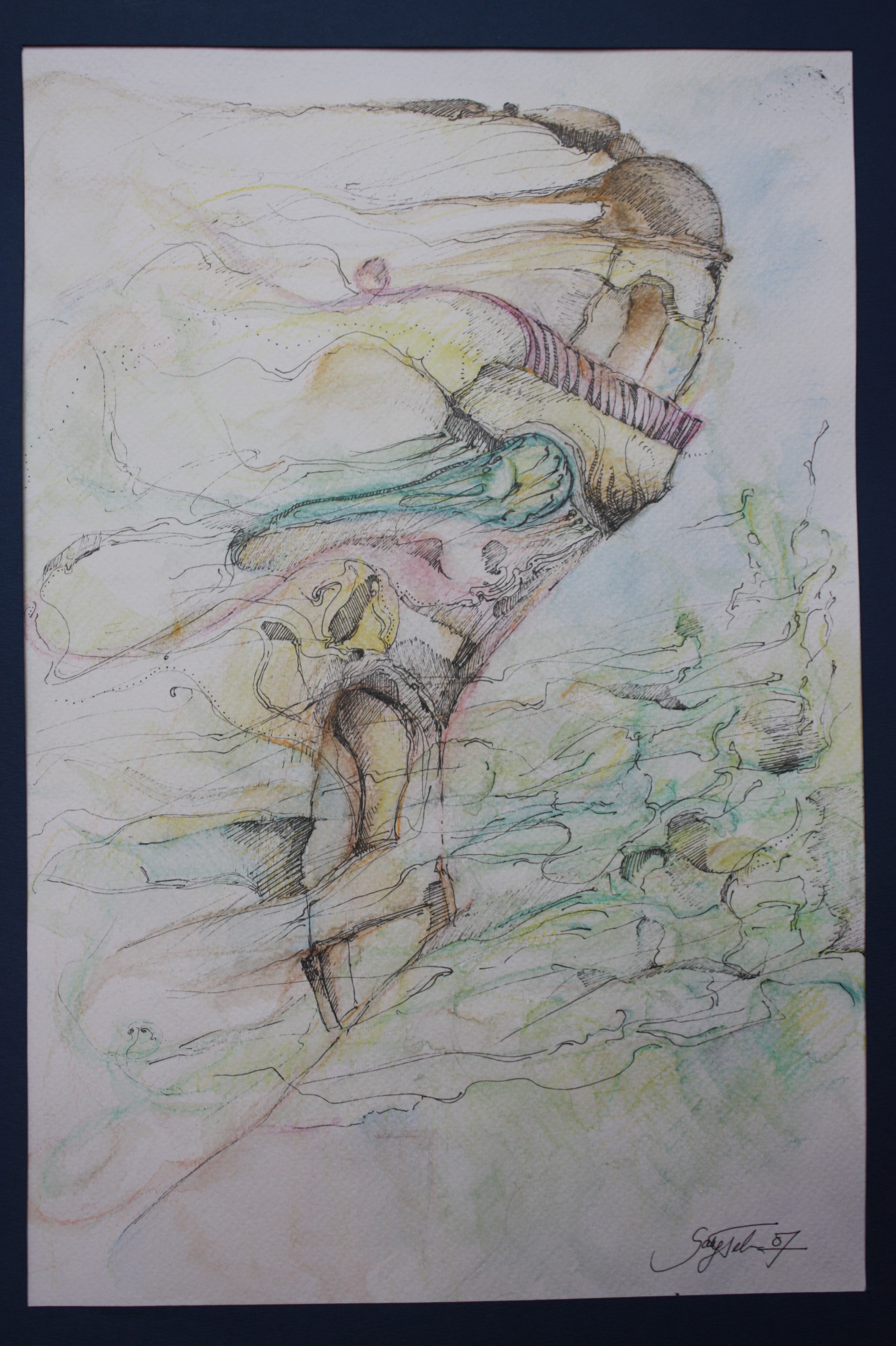 |
This picture is the work of my younger sister, who is 19. She is very artistic and I am very proud of her talent in painting and drawing so well. This is the reason why I chose one of her paintings for our "exhibition". And I chose this very painting in particular, because it is one of my favourites. I think the picture expresses the windy silence before a storm very well. When I look at it, it makes me feel as if I was right there in front of that church, feeling the icy wind and maybe even a little drizzle. Furthermore, it reminds me of the novel "Gone With the Wind", which is one of the my mostly loved books. |
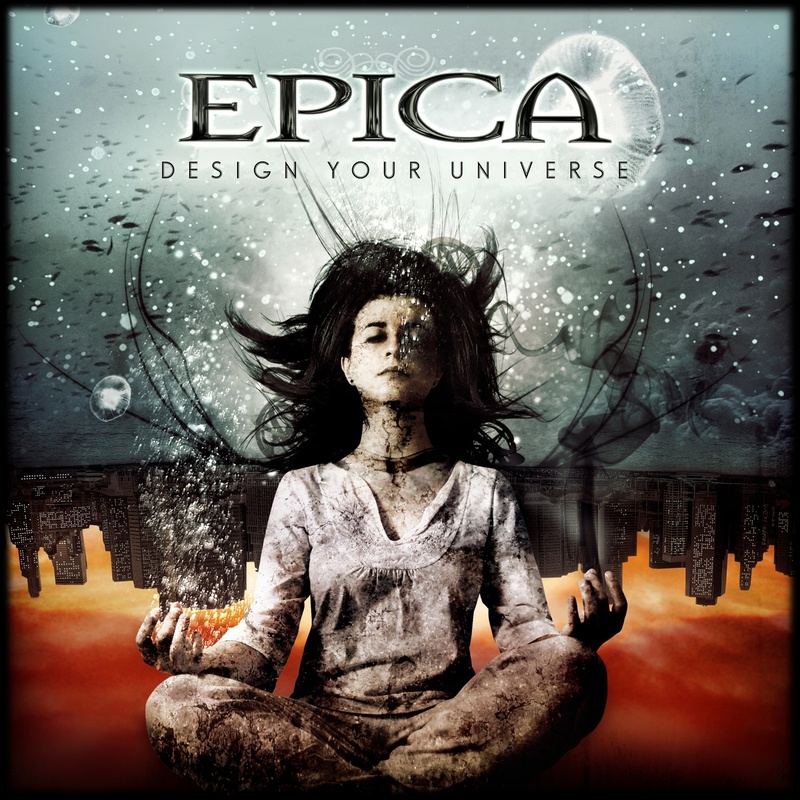 |
The picture I sent is a cover of a CD from a Dutch symphonic metal band Epica. The title is Design Your Universe and it was made by Stefan Heilemann. I like it very much because it's fundamentally connected to the lyrics and the music. It's a very contrastive image with the water, the sky, the moon, and the 'urban hell'. The music is also pretty diverse: from metal riffing to orchestral elements, but in the end all of this chaos makes sense, and you can appreciate it. The meditating figure has a quite obvious meaning: that it's our job to find our inner peace within all that's going around. It's not a very complicated image, but I think it's exactly what a CD cover is for: it grabs your attention, makes you think, and delivers a certain mood. |
 |
The reason I chose this, or rather these pictures is because they represent an art very that is close to my heart. The people in these pictures are not moving, but we can imagine that in real life they would be. They can be characterised as Argentinian tango dancers (one of whom is myself, who is not an official tango dancer). I decided to show you this form of dancing because it is not simply a performance art, but a life style. If somebody wants to do this right, they have to live and breathe with it.
|